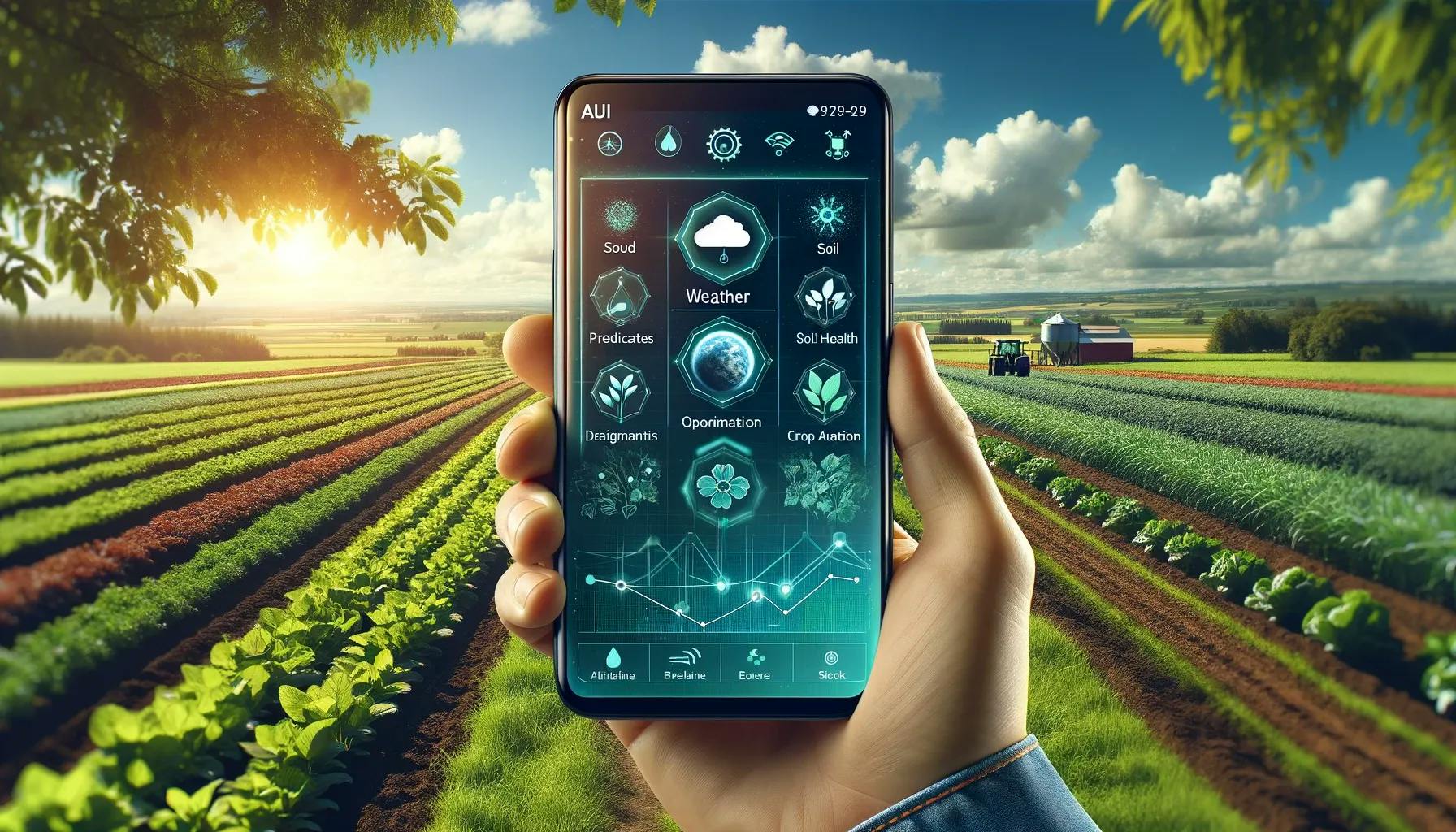Integrating AI into the MVP of an agricultural app
Explore how integrating AI into agricultural apps can revolutionize farming with personalized content, chatbot support, predictive analytics, and more, making technology an ally for modern farmers.

Olena Dontsova
Head of Marketing
01 Jan 2024
5 min read

Integrating AI into the MVP of an agricultural app can provide valuable insights and enhance user experience. Given the need for it to be cheap, quick, and easy to implement, here are some AI solutions that can be considered:
Personalized Content Recommendation:
- Usage: In the Knowledge Base or Library section.
- Description: AI can analyze user behavior, the crops they grow, and the problems they've faced, and recommend articles, videos, or tutorials that are most relevant to them.
- Implementation: Pre-trained recommendation system models can be used and tweaked to the app's needs.
Chatbots for Support and Queries:
- Usage: Feedback and Support System.
- Description: Implement a chatbot to address common queries, provide immediate assistance, or guide users on how to use the app.
- Implementation: Platforms like Dialogflow or Microsoft's Bot Framework allow easy integration of chatbots without deep AI expertise.
Simple Predictive Analytics:
- Usage: Weather Forecasting and Alerts, Crop Health Monitoring.
- Description: Based on past data, AI can make simple predictions about potential crop health issues or weather patterns.
- Implementation: Regression models or time-series forecasting using libraries like TensorFlow or Scikit-learn.
Image Recognition for Crop Health:
- Usage: Crop Health Monitoring. -Description: Users can upload photos of their crops, and the AI can identify common diseases or pests.
- Implementation: Pre-trained models on platforms like TensorFlow Hub can be utilized and fine-tuned with specific crop disease datasets.
Natural Language Processing (NLP) for Search:
- Usage: Search Functionality.
- Description: Improve the search functionality with NLP to understand user queries better and provide more accurate results.
- Implementation: Open-source NLP libraries like spaCy or NLTK can assist in this.
Data-Driven Insights and Tips:
- Usage: Dashboard, Task Management.
- Description: AI can analyze user input data and provide insights or suggestions like "Consider irrigating this week as no rainfall is expected" or "Your crops are due for pesticide application".
- Implementation: Rule-based AI with some decision trees can be created using frameworks like Scikit-learn.
Social Media Sentiment Analysis:
- Usage: Community or Forum.
- Description: Analyze the sentiment of posts or comments in the community to identify if there are widespread issues or concerns.
- Implementation: Pre-trained sentiment analysis models can be utilized with minor adaptations.
For an MVP, it's crucial to focus on the AI solutions that bring the most immediate value to the users. It's also vital to keep user experience smooth and uncomplicated, ensuring AI acts as an enhancer rather than a complicator. Once the MVP is successful, further, more complex AI solutions can be integrated in subsequent versions.
Some ideas
Given the rapidly evolving nature of technology and the unique challenges faced by the agricultural sector, there are several potential benefits and features that could be introduced in a new agricultural app. Here are some innovative ideas:
Augmented Reality (AR) Soil Analysis:
Use AR to visualize soil quality and characteristics. When a farmer points their device at a piece of land, the app can overlay information about the soil's pH, moisture, and nutrient levels. This can make the understanding of soil conditions more intuitive.
Virtual Farm Tours:
Allow farmers to give virtual tours of their farms, showcasing their practices, methods, and produce. This can be beneficial for organic farmers or those practicing innovative farming methods to attract buyers or collaborators. AI-powered Crop Rotation Suggestions:
Based on historical data and advanced AI analysis, the app could recommend crop rotation strategies tailored to enhance soil health, reduce pests, and optimize yield.
Sustainability and Carbon Footprint Metrics:
An integrated calculator that helps farmers understand their carbon footprint and suggests sustainable farming practices. It could be a significant selling point given the increasing focus on sustainability. Remote Pest Control:
Integration with IoT devices that can release biological pest controls (like ladybugs) or specific, minimal pesticides upon detection of certain pests.
Peer-to-peer Equipment Sharing:
A feature that allows farmers to rent out or share heavy machinery or tools. Think of it as an "Airbnb for farm equipment."
Virtual Reality (VR) Training Modules:
Offer VR-based training sessions for farmers on topics like machinery operation, pest control methods, or advanced farming techniques. Integrated E-commerce for Direct Sales:
A feature allowing farmers to sell their produce directly to consumers or businesses, bypassing middlemen and potentially getting better prices.
Gamification of Farm Tasks:
Turn mundane tasks into challenges or games, awarding points and badges for completing them. It can be a fun way to motivate younger farmers or those new to farming.
Crowdsourced Problem Solving:
A platform where farmers can post unique challenges they're facing, and the community can pitch in with solutions. Think of it as a "Stack Exchange for farmers."
Biodiversity Monitoring:
An AI tool that helps farmers keep track of and promote biodiversity on their land, beneficial for the environment and often for the crops as well.
Subscription Box Integration:
Partner with subscription box services to allow consumers to get fresh produce from specific farms, bridging the gap between farmers and urban consumers.
Incorporating AI into agricultural apps marks a pivotal shift towards data-driven farming. By harnessing the power of AI, we can empower farmers with advanced tools for decision-making and problem-solving, setting the stage for a sustainable and prosperous future in agriculture. This journey of innovation is just the beginning, as we continue to unlock the full potential of technology in harmony with nature.
Unlock Advanced Insights and Efficiency
Leverage AI-driven solutions for personalized advice, predictive analytics, and enhanced crop health monitoring.